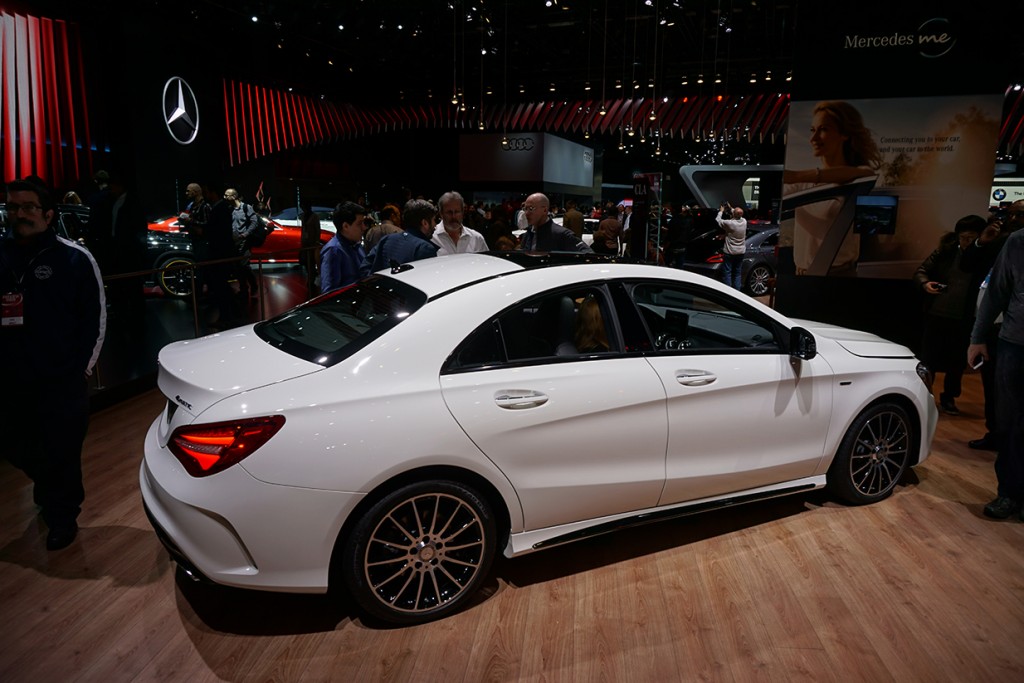Radio has long been the king of in-car entertainment. In recent years, new audio services have been introduced in automobiles to enhance the driver and passenger experience. The addition of these services means that the once prominent radio dial can be buried behind menu screens in a new user interface. While “radio remains the preferred from of audio entertainment in the car,” making sure that it remains available and accessible to users is important. David Layer, NAB Senior Director, Advanced Engineering, recently travelled to the North American International Auto Show (NAIAS) in Detroit for a look at the current state of radio in the dash.

Mercedes C Class was among the majority of cars with HD Radio
Of the 41 vehicles David looked at, nearly every system supported AM, FM (with RDS) and Sirius XM. One exception was the BMW i3 all electric vehicle, which does not support AM. BMW has said that the electric motors cause interference on AM, though David found that all the other electric cars that he looked at (the Chevy Bolt, Smart Car Electric Coupe, Nissan Leaf and Mercedes B 250 e) continue to support both AM and FM.

SoundHound in the Hyundai Veloster
While new user interfaces may take radio an extra click away from the user, they also provide new opportunities for innovation. Two Hyundai radio’s that David saw included the SoundHound music recognition system and built in cellular connections. Hitting the SoundHound button while listening to a radio station provides album art, lyrics and artist information on the song being played.
When done well, the UI enhanced the user experience of radio providing features like station lists which, when selected, scan the band and populate a list of receivable stations for both AM and FM. The Volvo S90 stood out above the rest, having one of the most configurable and easy to use interfaces.

Volvo S90 dashboard
There were a lot of HD Radio receivers on display. Of the 41 systems that David saw, 32 supported reception of HD Radio. While some of these HD Radio receivers were displaying “Artist Experience” album art, David said that “Signal reception in the convention center was spotty, so it was unclear which HD Radio receivers were actually Artist Experience capable.”

